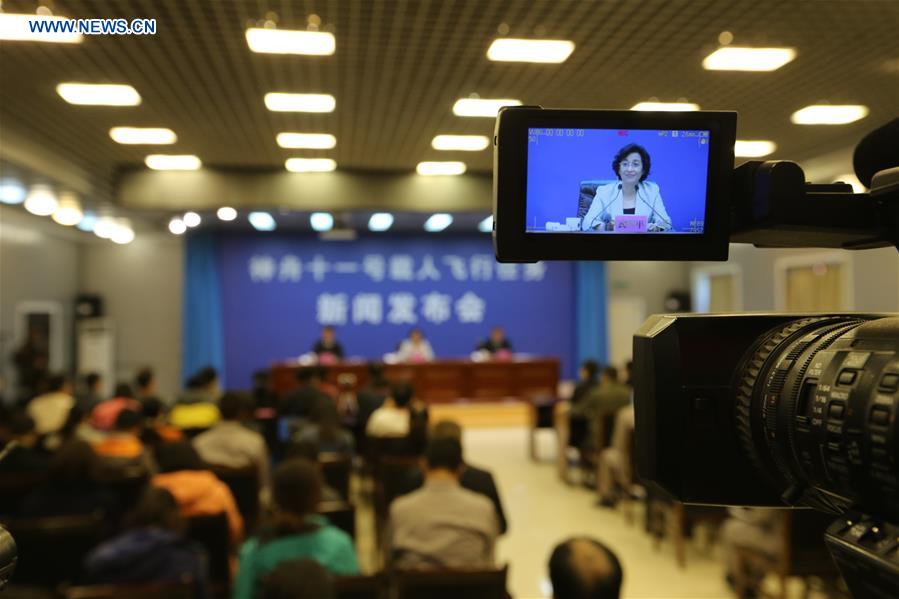16.10.2016
.
Astronauts of China's Shenzhou-11 mission meet press
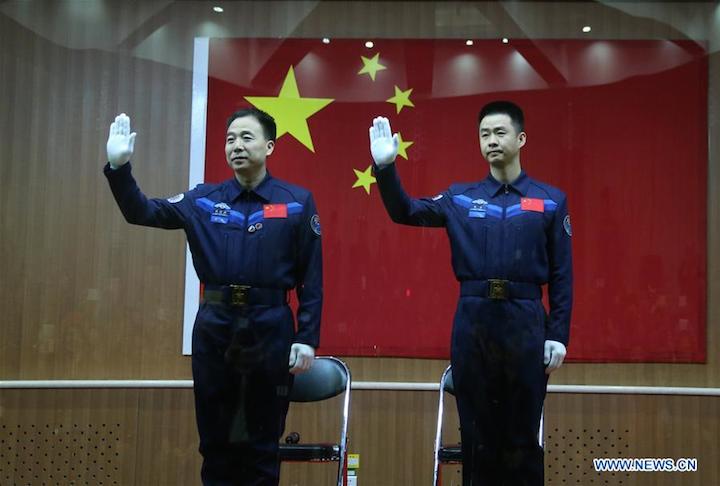
Chinese astronauts Jing Haipeng (L) and Chen Dong meet the media at a press conference at the Jiuquan Satellite Launch Center in northwest China, Oct. 16, 2016. The two male astronauts will carry out the Shenzhou-11 mission. The Shenzhou-11 manned spacecraft will be launched at 7:30 a.m. Oct. 17, 2016 Beijing Time (2330 GMT Oct. 16). (Xinhua/Li Gang)
JIUQUAN, Oct. 16 (Xinhua) -- Chinese astronauts of the Shenzhou-11 mission, Jing Haipeng and Chen Dong, met the press Sunday ahead of Monday's launch.
Sitting under a national flag, the astronauts appeared in good spirits and answered several questions.
"Although the job is challenging, risky and dangerous, there is nothing more I would rather do," Jing, 50, who is commander of this mission, told reporters.
It will be Jing's third spaceflight following his Shenzhou-7 mission in September 2008 and Shenzhou-9 mission in March 2012.
"[For this mission] we have improved our ability to deal with emergencies, first aid and space experiments," Jing said.
Born in central China's Henan Province in 1978, this will be the first time Chen has been a crew member of China's manned spacecraft.
"I will treasure every moment in space and ensure I record my experience in my diary and enjoy the out-of-this-world scenery," Chen said.
With a safe flight record of 1,500 hours as an air force pilot, Chen was named one of China's second group of astronauts in May 2010, and was selected as a crew member for the Shenzhou-11 mission in June 2016.
They will depart early Monday for the launch site and board Shenzhou-11 at Jiuquan Satellite Launch Center in northwest China.
Shenzhou-11 is expected to dock with the orbiting space lab Tiangong-2, which was launched from Jiuquan on Sept. 15. The astronauts will stay in the space lab for 30 days before returning to Earth.
-
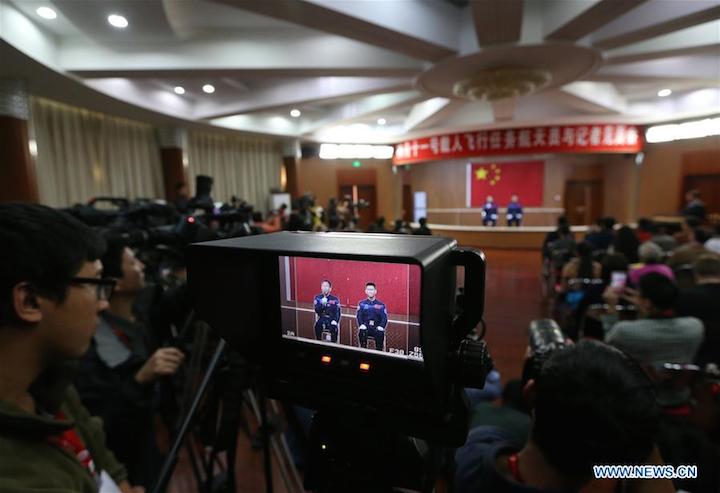
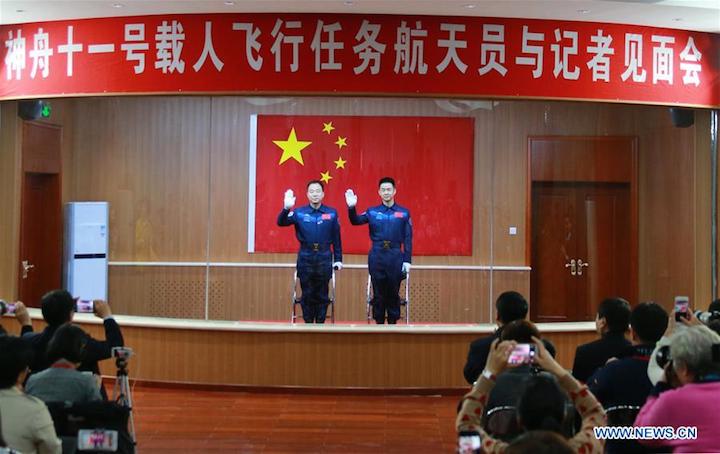
Astronauts to be Xinhua's special correspondents in space
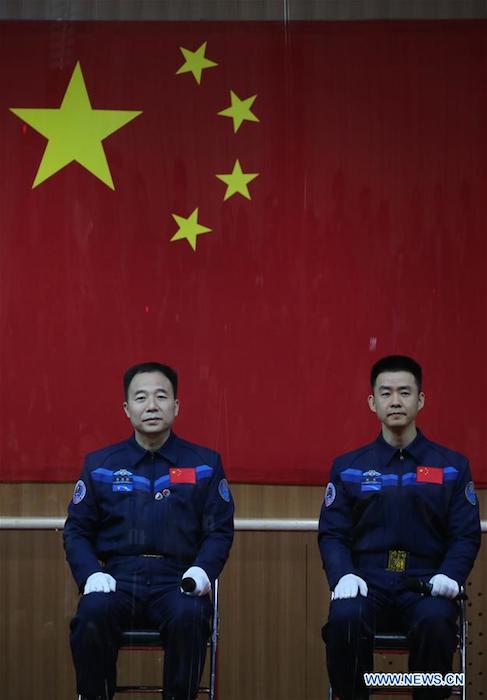
Chinese astronauts Jing Haipeng (L) and Chen Dong meet the media at a press conference at the Jiuquan Satellite Launch Center in northwest China, Oct. 16, 2016. The two male astronauts will carry out the Shenzhou-11 mission. The Shenzhou-11 manned spacecraft will be launched at 7:30 a.m. Oct. 17, 2016 Beijing Time (2330 GMT Oct. 16). (Xinhua/Li Gang)
BEIJING, Oct. 16 (Xinhua) -- Astronauts with China's Shenzhou-11 manned spacecraft, which is scheduled for blast-off early Monday, will be special correspondents for Xinhua News Agency during their space mission.
Jing Haipeng and Chen Dong, the two male astronauts, will board the spacecraft at the Jiuquan Satellite Launch Center in northwest China, Wu Ping, deputy director of China's manned space engineering office, told a press conference Sunday.
In addition to their assigned tasks, the two special correspondents will share their work and life in space via text, audio and video through Xinhua's media services. Their photos taken in space will also be shared by Xinhua.
It will take the spacecraft around two days to dock with the orbiting space lab Tiangong-2, and the astronauts will stay in the space lab for 30 days, Wu said.
The content created by the astronauts will be a diary, tracking the special correspondents' experience of living and working in space.
"I am looking forward to viewing Earth and our motherland from space," said Chen, adding that he hoped to be able to take many photos and enjoy the celestial scenery.
Moreover, the astronauts will interact with the audience. Xinhua will collect questions from space fans, with the #AskTaikonaut hashtag on its Twitter and Facebook accounts.
Xinhua will also showcase the content created through its multiple new media channels.
The move is the latest by Xinhua to develop its media convergence.
----
China to launch Shenzhou-11 manned spacecraft on Oct. 17
|
Wu Ping, deputy director of China's manned space engineering office, addresses a press conference at the Jiuquan Satellite Launch Center in northwest China, Oct. 16, 2016. The Shenzhou-11 manned spacecraft will be launched at 7:30 a.m. Oct. 17, 2016 Beijing Time (2330 GMT Oct. 16). The spaceship will take two male astronauts Jing Haipeng and Chen Dong into space. The spacecraft will dock with orbiting space lab Tiangong-2 within two days and the astronauts will stay in the space lab for 30 days before returning to Earth. The 50-year-old Jing will be commander of the mission. It will be the first spaceflight of 38-year-old Chen and Jing Haipeng's third. (Xinhua/Li Gang) JIUQUAN, Oct. 16 (Xinhua) -- The Shenzhou-11 manned spacecraft will be launched at 7:30 a.m. Monday Beijing Time, China's manned space program spokesperson said Sunday. The spaceship will take two male astronauts Jing Haipeng and Chen Dong into space, said Wu Ping, deputy director of China's manned space engineering office, at a press conference at the Jiuquan Satellite Launch Center. The mission will be carried out with a Long March-2F carrier rocket, Wu said. The spacecraft will dock with orbiting space lab Tiangong-2 within two days, and the astronauts will stay in the space lab for 30 days, she said. After that the Shenzhou-11 spaceship will separate with Tiangong-2 and return to Earth within one day, Wu said. The mission aims to transport personnel and materials between Earth and Tiangong-2, and examine rendezvous, docking and return technologies. During the mission, the spacecraft will form a complex with Tiangong-2. The complex's capabilities of supporting astronauts' life, work and health, and astronauts' abilities for carrying out flight missions will be tested, Wu said. Other objectives include conducting aerospace medical experiments, space science experiments and in-orbit maintenance with human participation, along with activities to popularize scientific knowledge, she added. Several technical alterations have been made to Shenzhou-11, though its main functions and technical parameters remain basically the same with Shenzhou-10, Wu said. To meet the needs of this mission, the orbit control strategy and flight procedures have been adjusted to adapt Shenzhou-11 to the change of the rendezvous, docking and return orbit from 343 kilometers to 393 kilometers from Earth. The layout of cargo loading has been adjusted to enhance transportation capabilities for the mission. To further improve the spacecraft's reliability and astronauts' safety, wide-beam relay telecommunications devices have been equipped, which will significantly expand the scope of telemetry, tracking and control, as well as improve the space-ground communication support capabilities when the posture of the spacecraft is changing rapidly. To verify future space technologies and meet the demand for prolonging the service life of rendezvous, telemetry and tracking devices in future space stations, such devices in Shenzhou-11 have been upgraded, according to Wu. Certain technical alterations have also been made to the carrier rocket, she said.
|
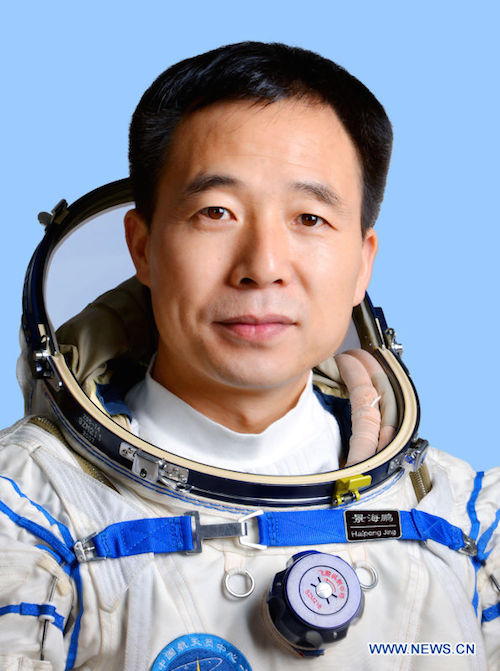
This undated photo shows Jing Haipeng, one of the two astronauts who will carry out China's Shenzhou-11 mission. The Shenzhou-11 manned spacecraft will be launched at 7:30 a.m. Oct. 17, 2016 Beijing Time (2330 GMT Oct. 16). The spaceship will take two male astronauts Jing Haipeng and Chen Dong into space. The spacecraft will dock with orbiting space lab Tiangong-2 within two days, and the astronauts will stay in the space lab for 30 days. The 50-year-old Jing will be commander of the mission. It will be his third spaceflight following his Shenzhou-7 mission in 2008 and Shenzhou-9 mission in 2012. It will be the first spaceflight of 38-year-old Chen.
-
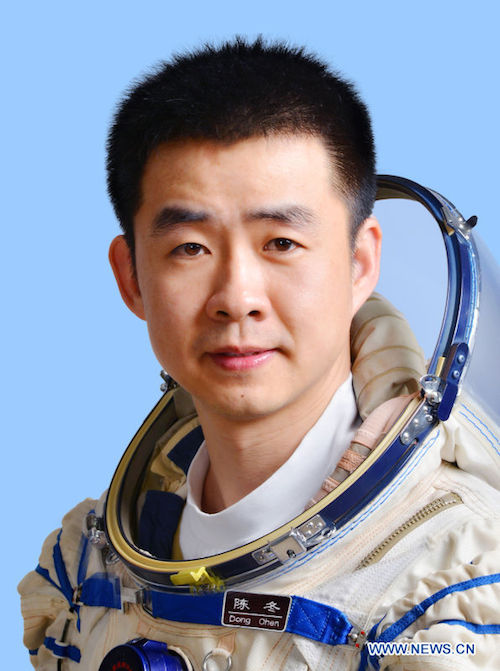
This undated photo shows Chen Dong, one of the two astronauts who will carry out China's Shenzhou-11 mission. The Shenzhou-11 manned spacecraft will be launched at 7:30 a.m. Oct. 17, 2016 Beijing Time (2330 GMT Oct. 16). The spaceship will take two male astronauts Jing Haipeng and Chen Dong into space. The spacecraft will dock with orbiting space lab Tiangong-2 within two days, and the astronauts will stay in the space lab for 30 days. It will be the first spaceflight of 38-year-old Chen and Jing Haipeng's third.
Quelle: Xinhua
-
Two astronauts set to travel to Tiangong-2 space lab
China Tiangong-2 Space Lab Launch
China's Shenzhou 11 manned space flight mission will send two astronauts to dock with the recently launched Tiangong-2 space lab. This is China's sixth manned space flight and comes as an important test for Chinese space technology. In the future, China's space program plans to have its very own fully functioning space station in orbit.
The Shenzhou 11 spacecraft will take two astronauts into orbit, nearly 400 kilometers above the earth.
Before docking with the space lab, the Shenzhou 11 will need adjustments to both speed AND position.
Too fast - it will crash into the Tiangong 2 and too slow it simply won't make it.
The Shenzhou 11 will need every bit of precision to lock in with the space lab.
Even a tiny deviation could cause the two to fling apart.
If all goes well, the two astronauts are to enter the Tiangong-2 through a passage that connects the space lab to the spacecraft.
They will stay in the space lab for 30 days, while the Shenzhou 11 spacecraft will remain docked.
Upon completing their mission, the crew will return with the Shenzhou 11 as it will detach from the space lab and bring the astronauts back down to earth.
Quelle: CCTV
---
Update: 22.20 MESZ
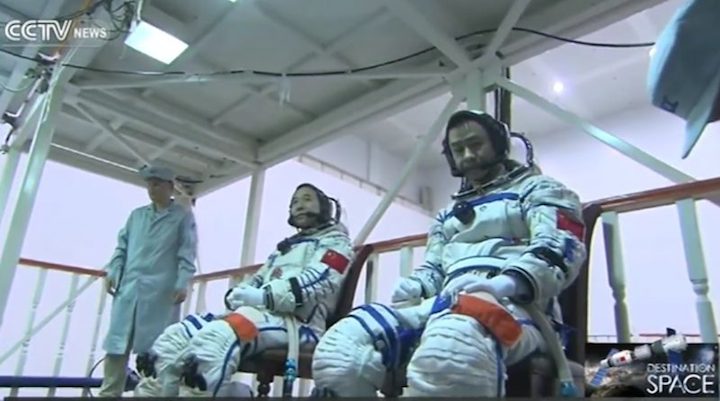
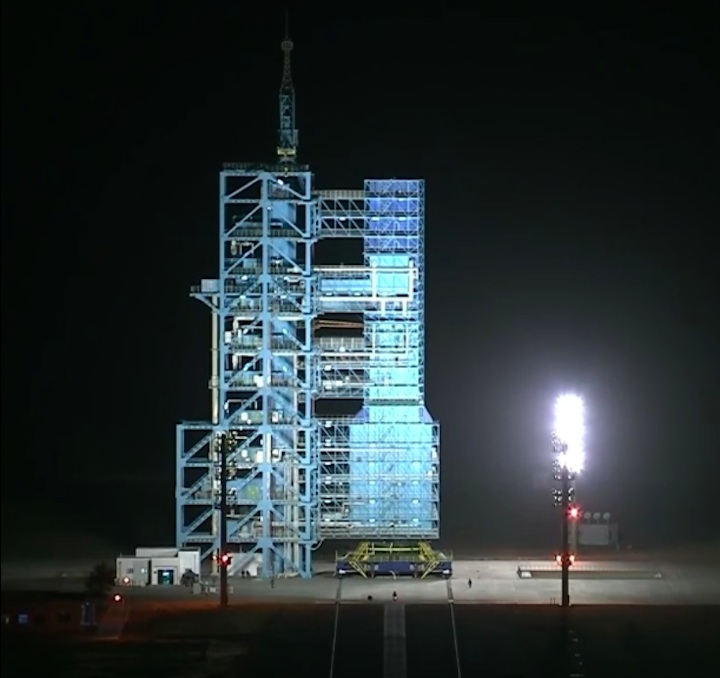
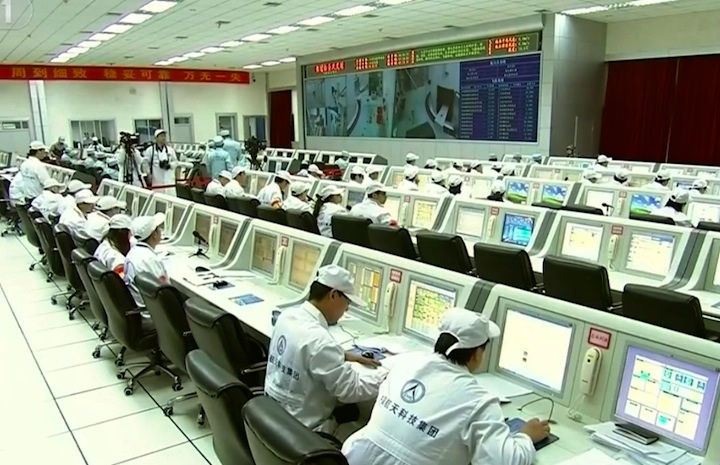
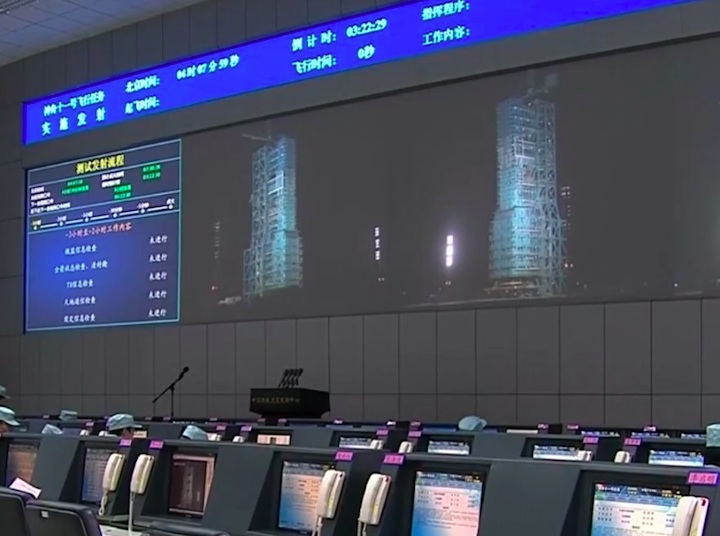
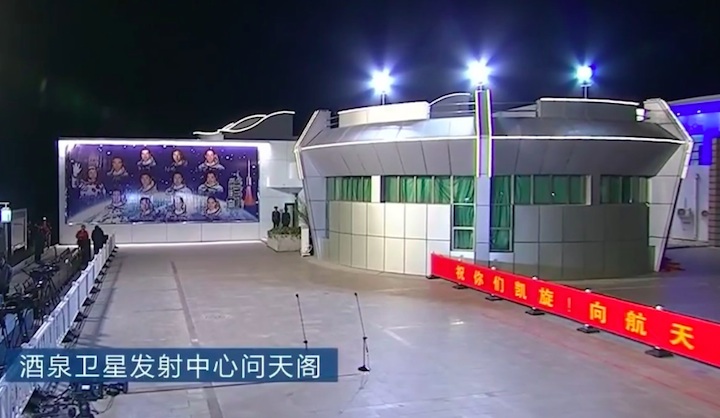
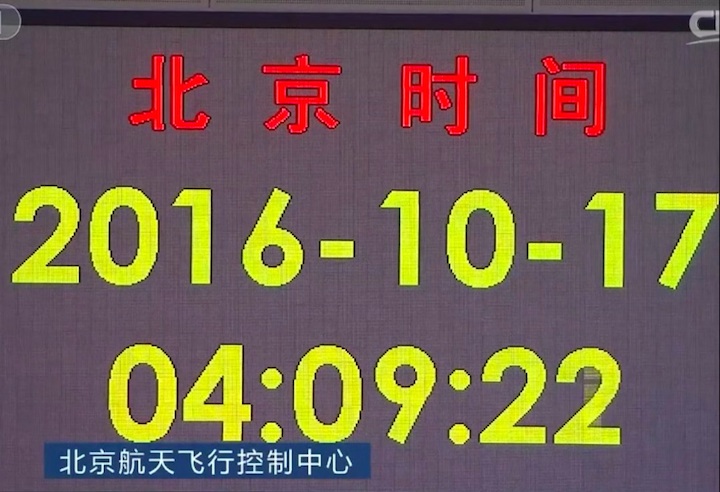
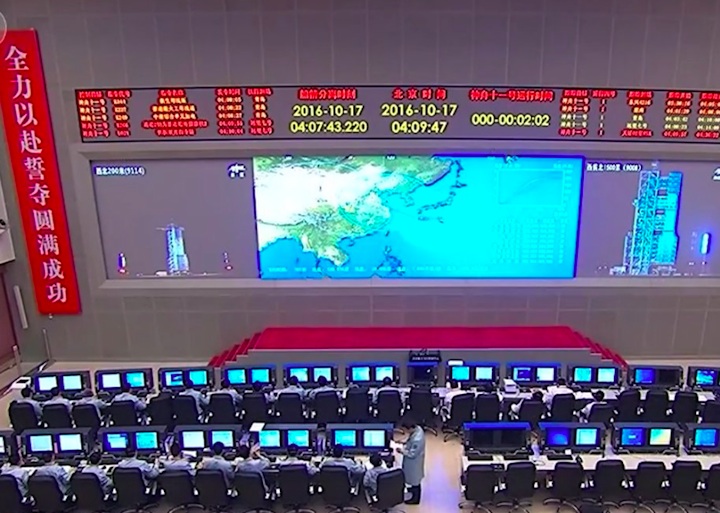
...
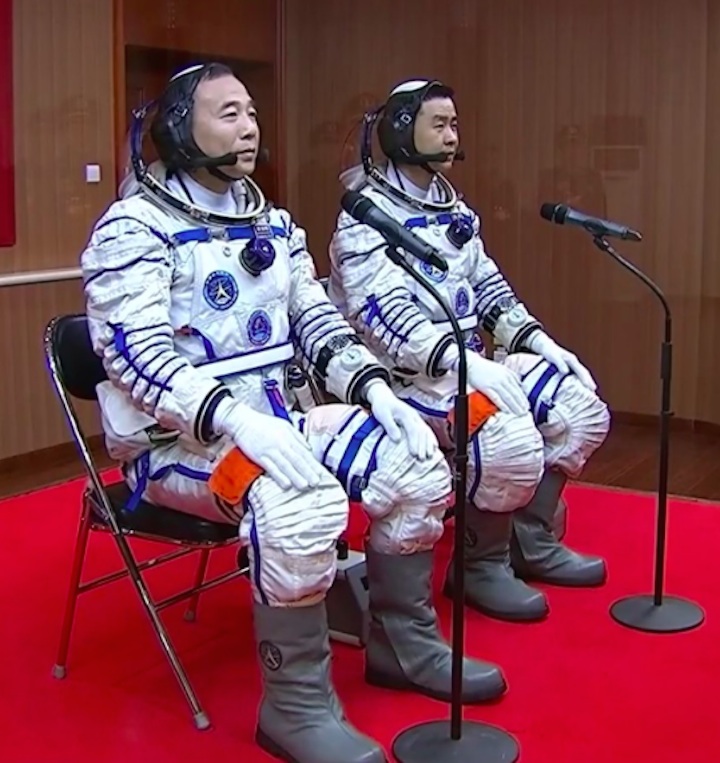
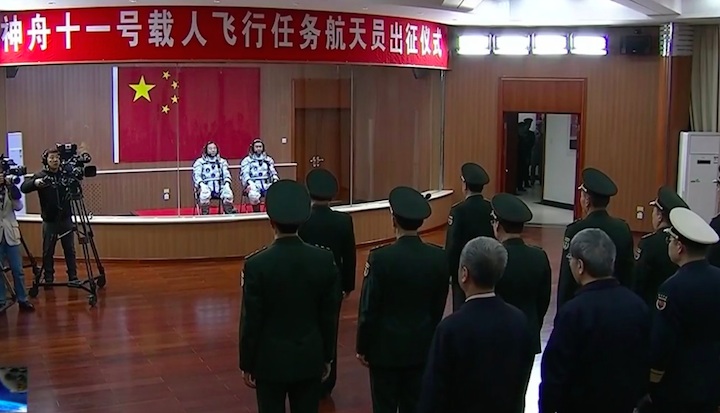
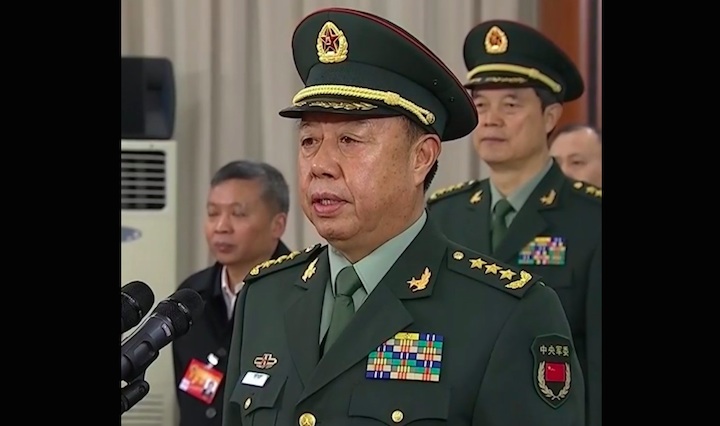
...22.55 MESZ
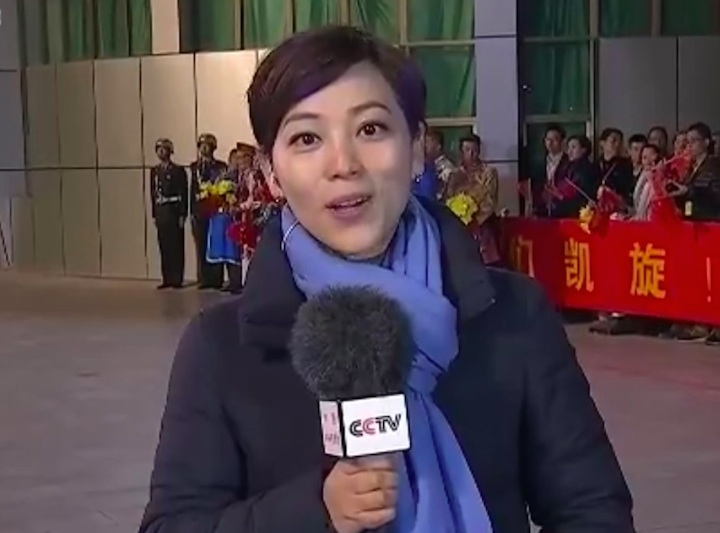
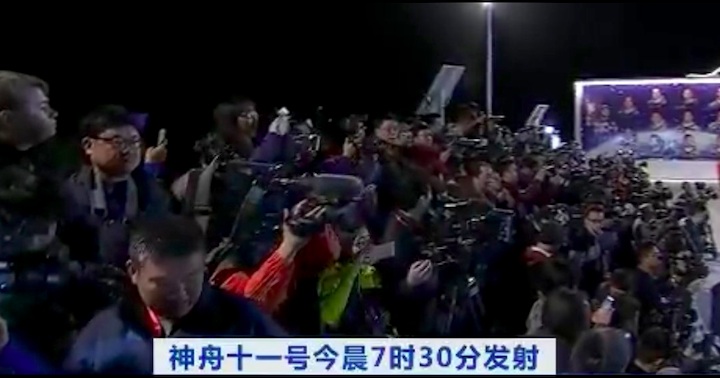
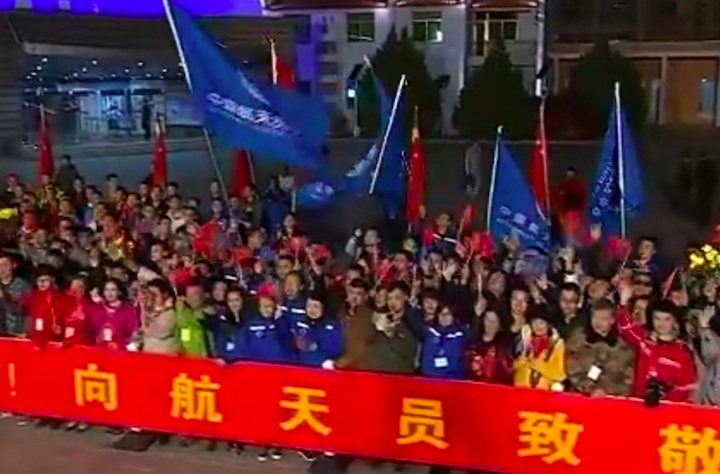

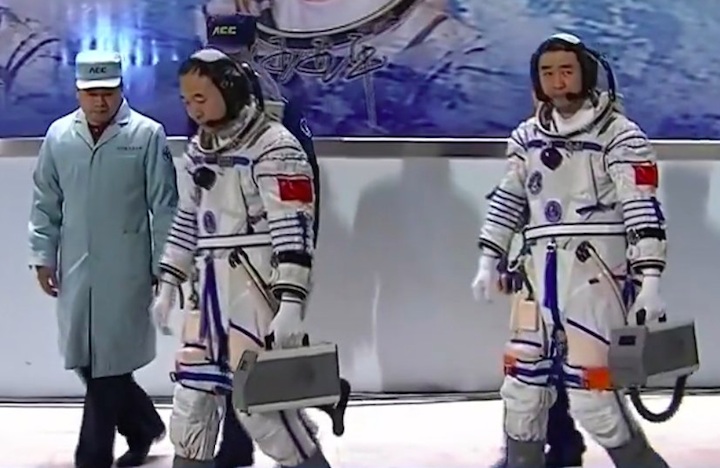


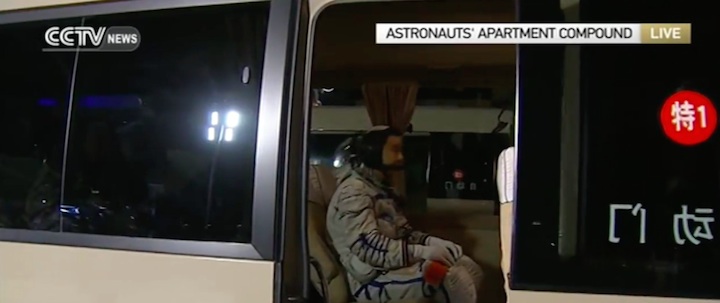

...
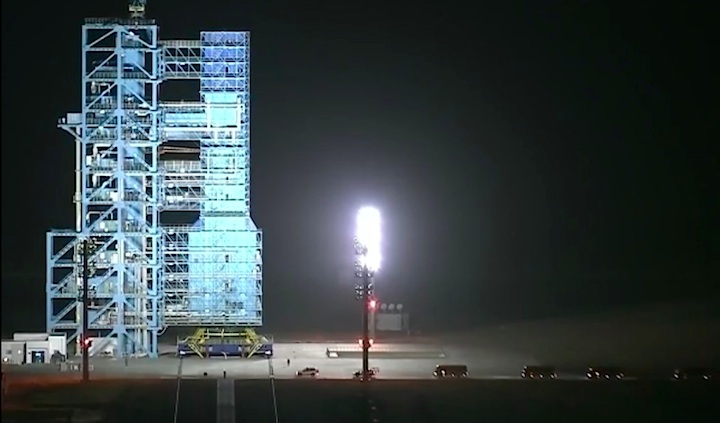
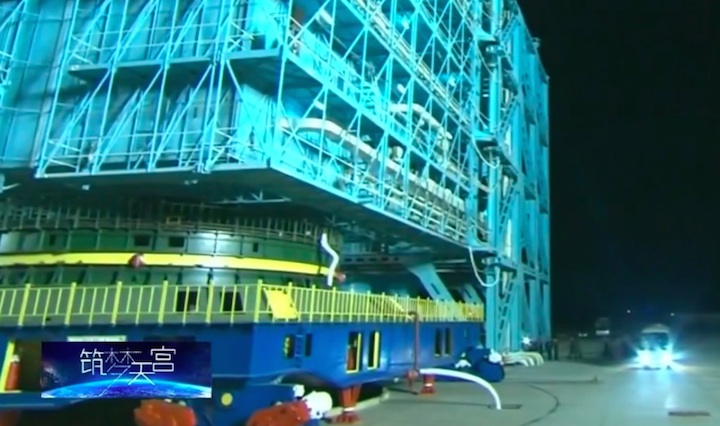
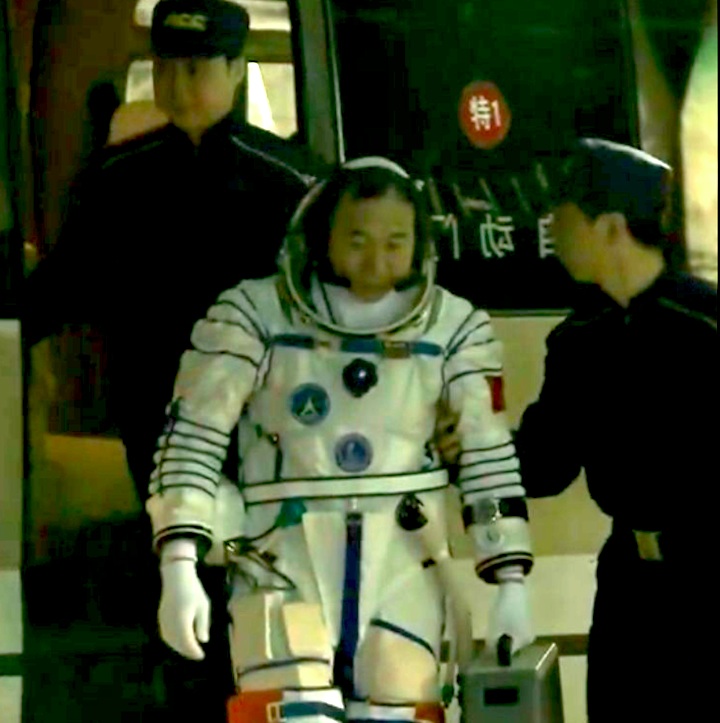
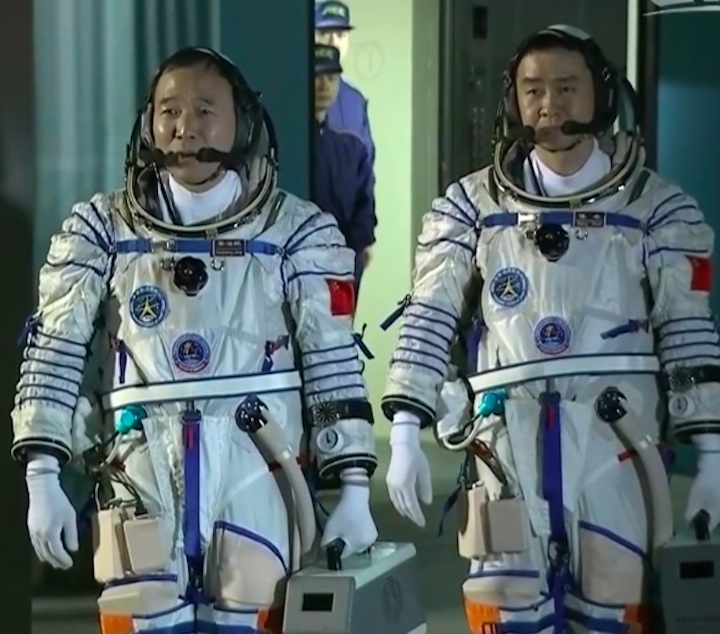
...23.15 MESZ
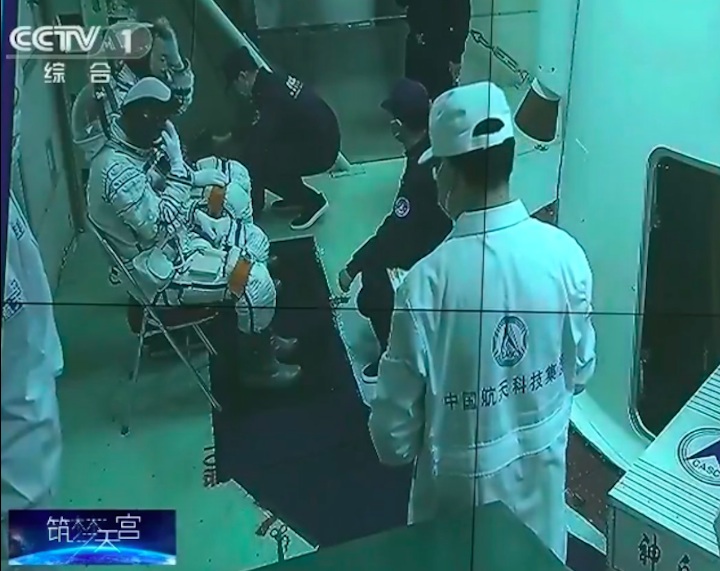
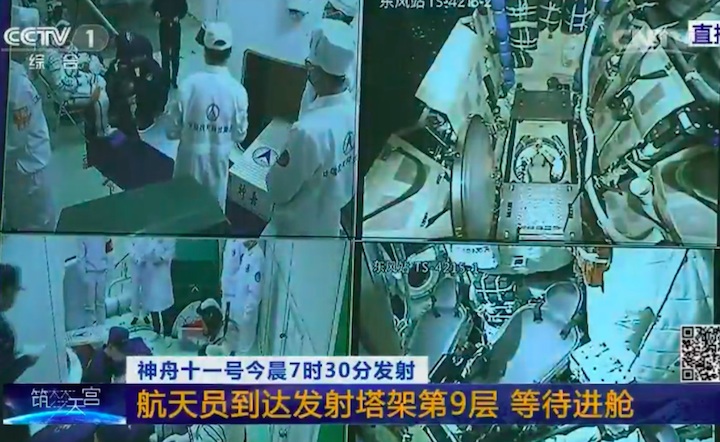
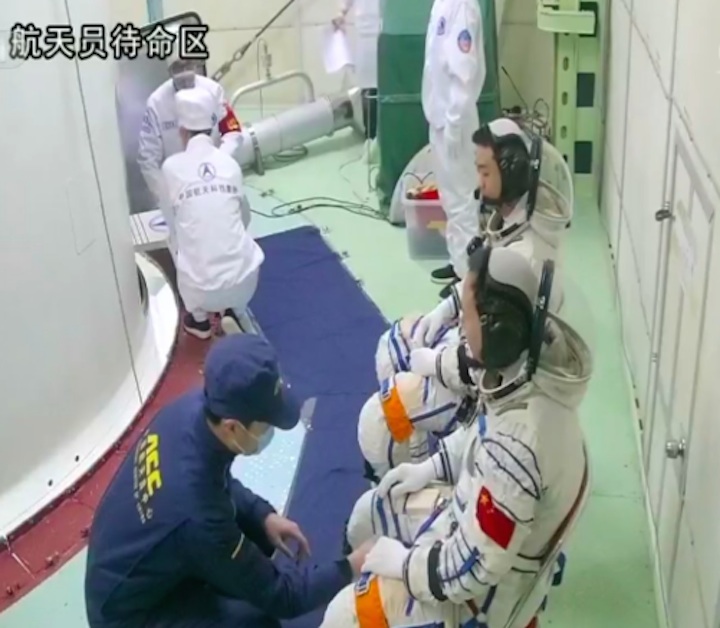
...
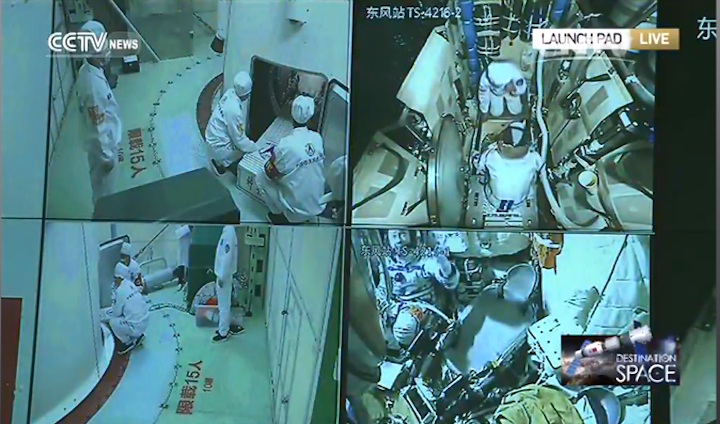
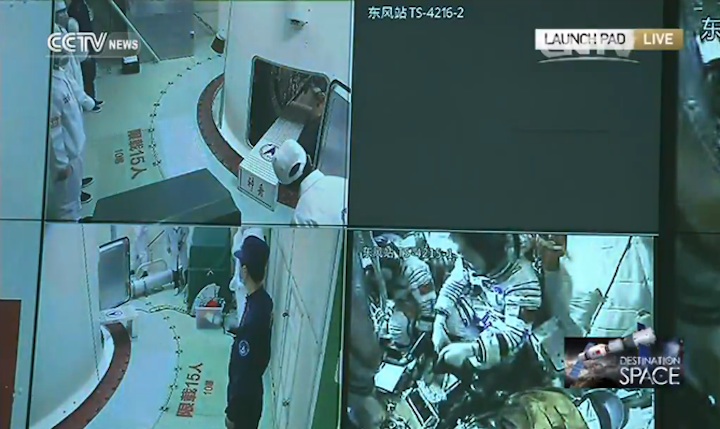
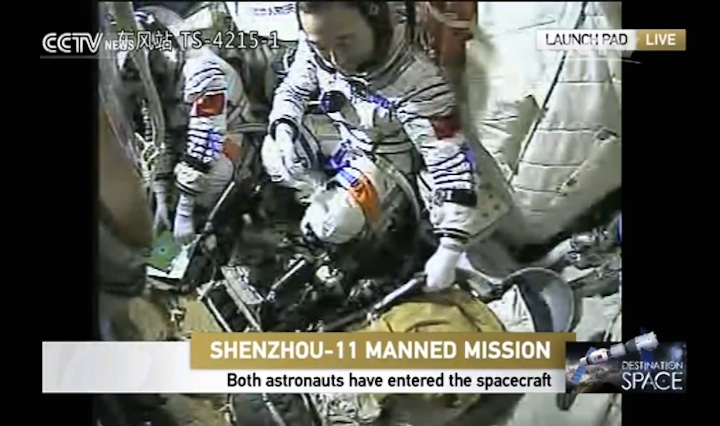

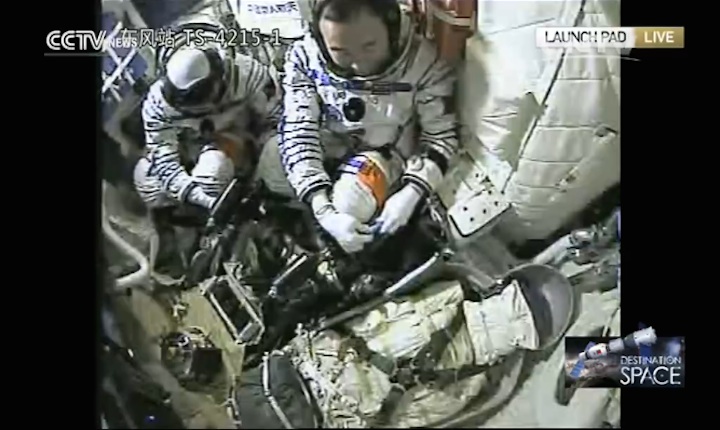
...23.30 MESZ
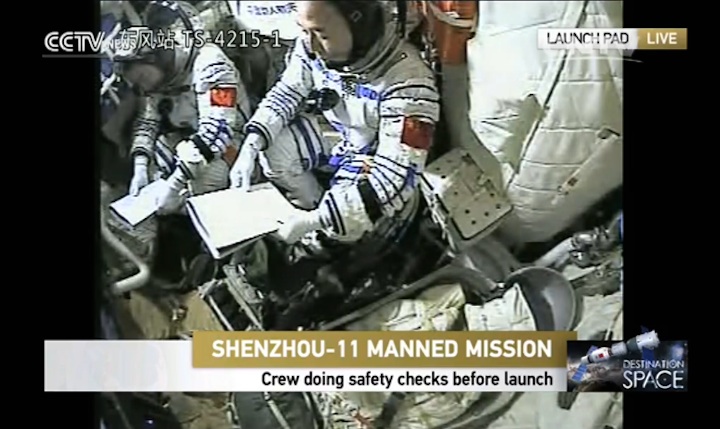
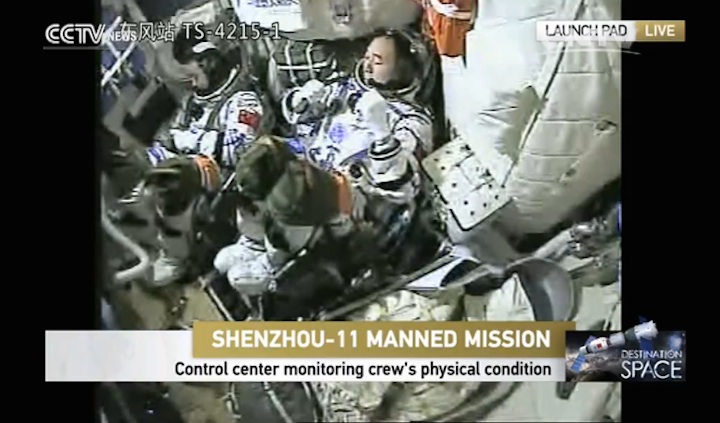
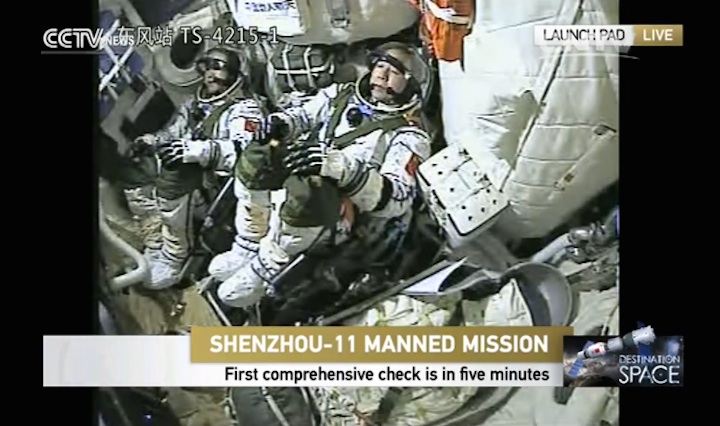
...23.50 MESZ
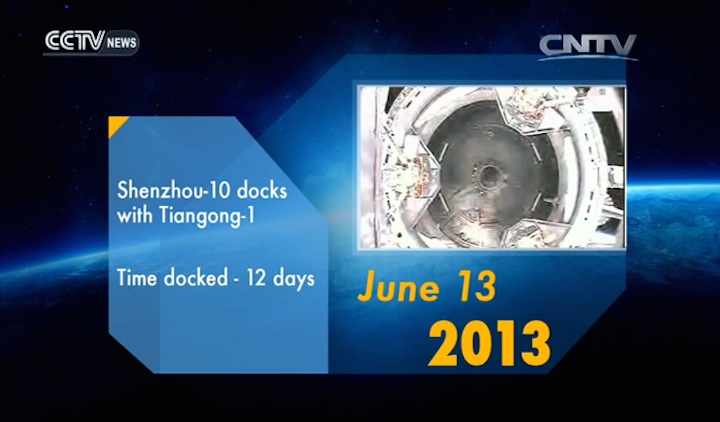
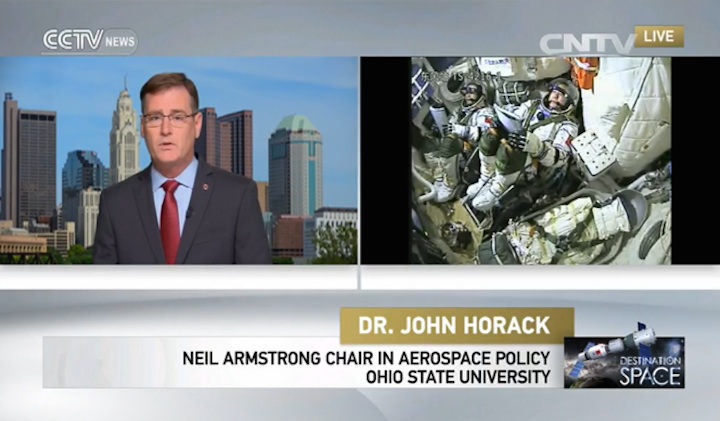


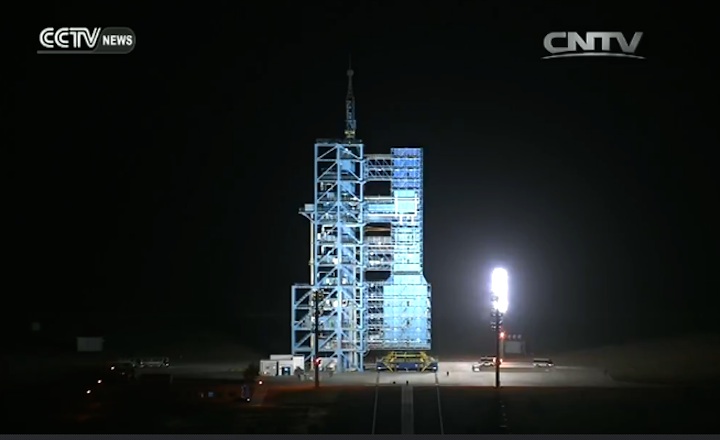
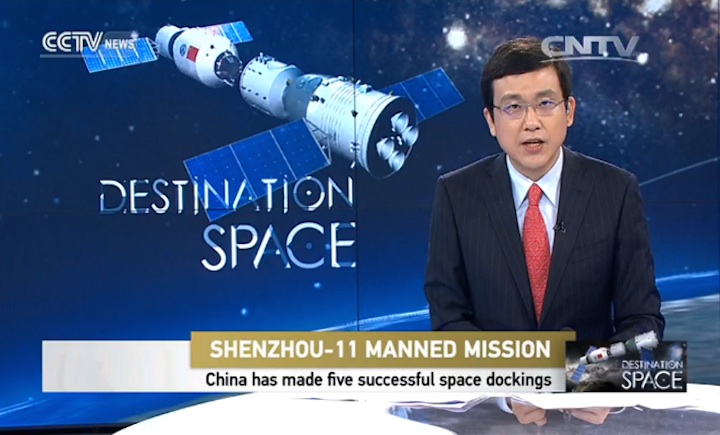
Quelle: CCTV
-
Update...17.10.2016
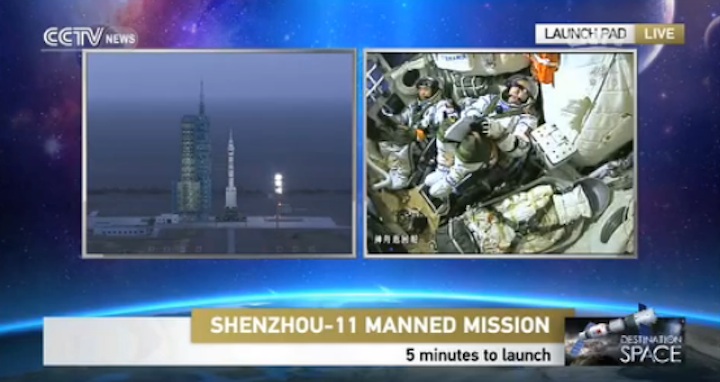
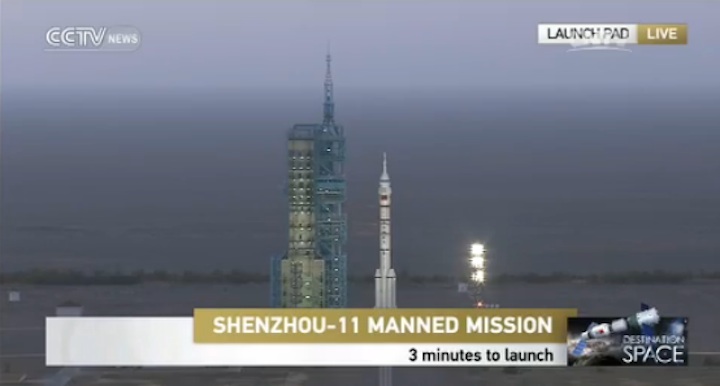
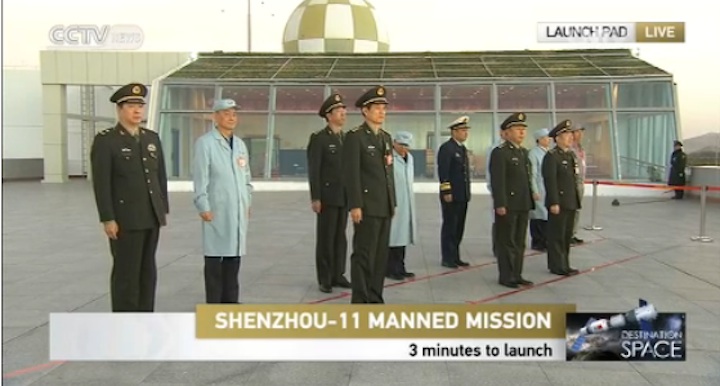

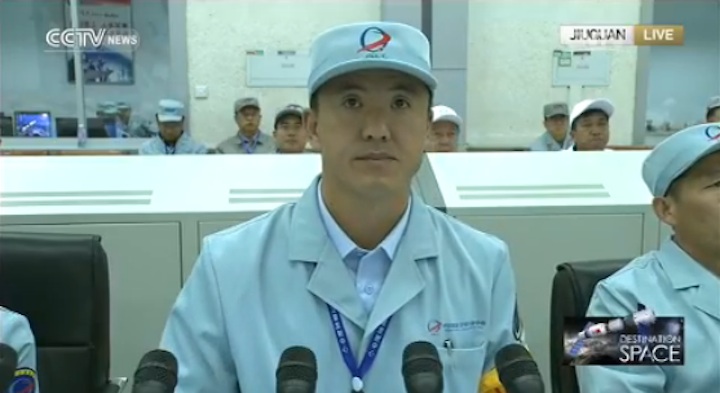
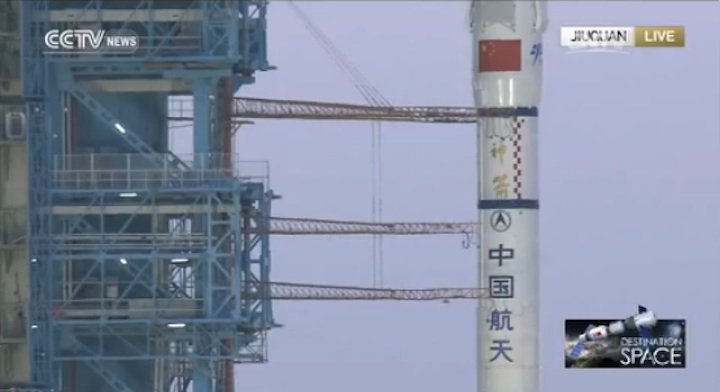
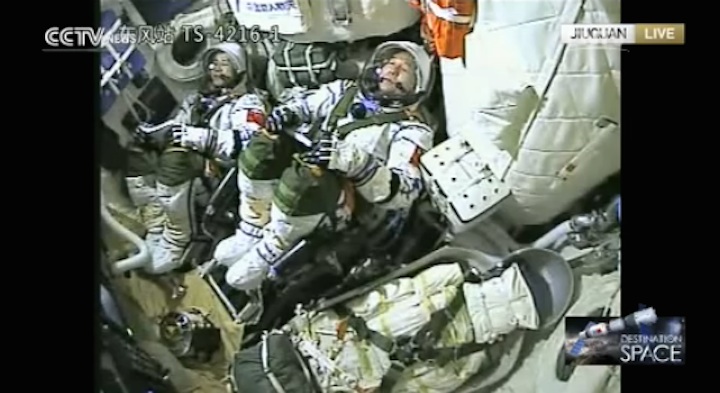
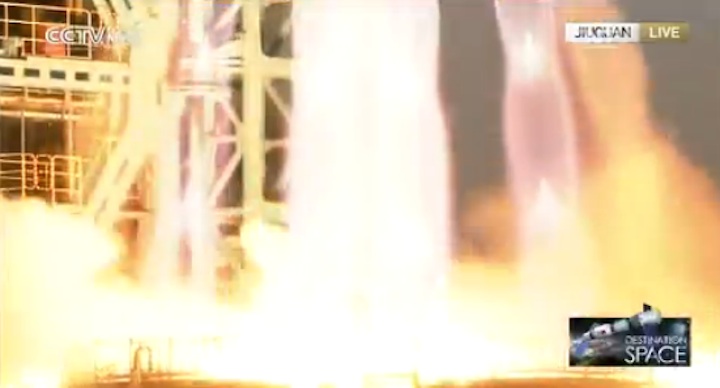
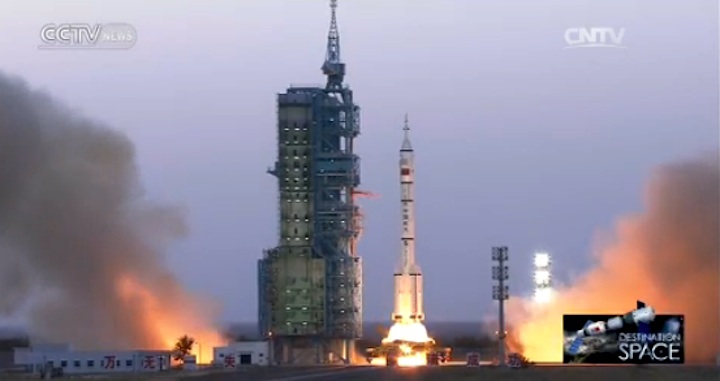
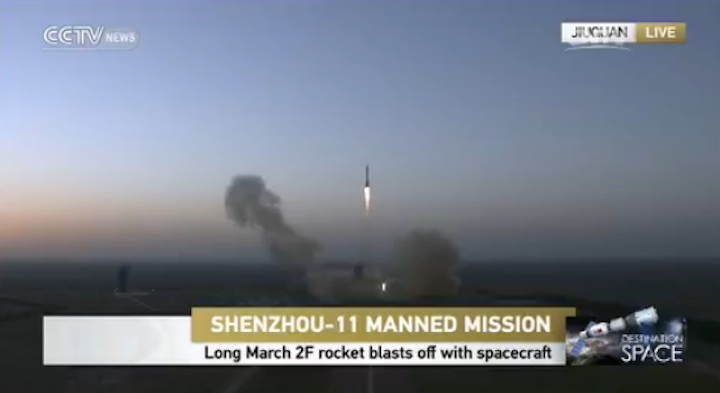
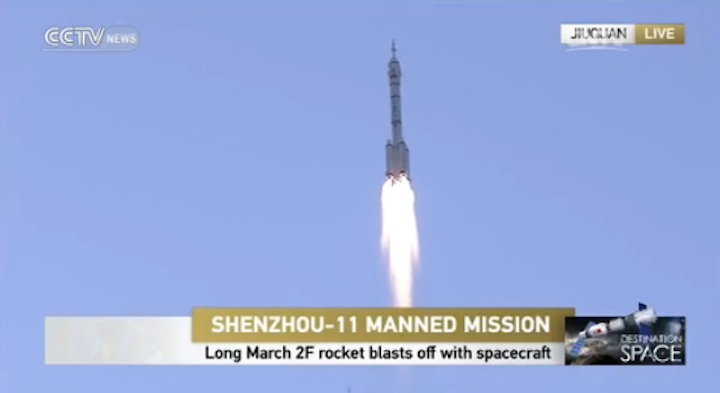
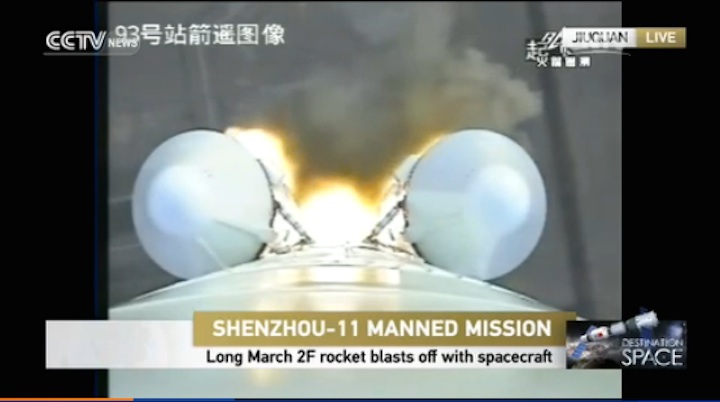
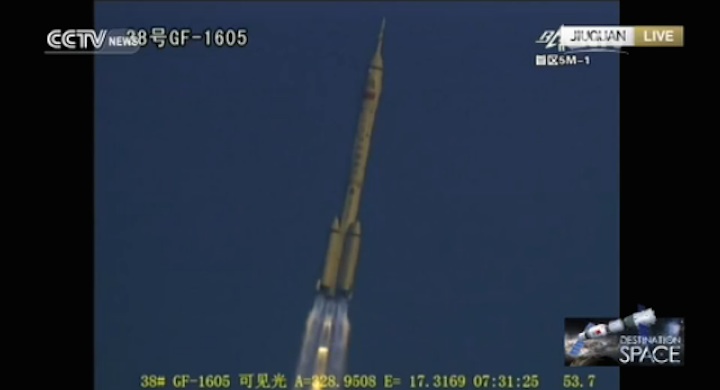
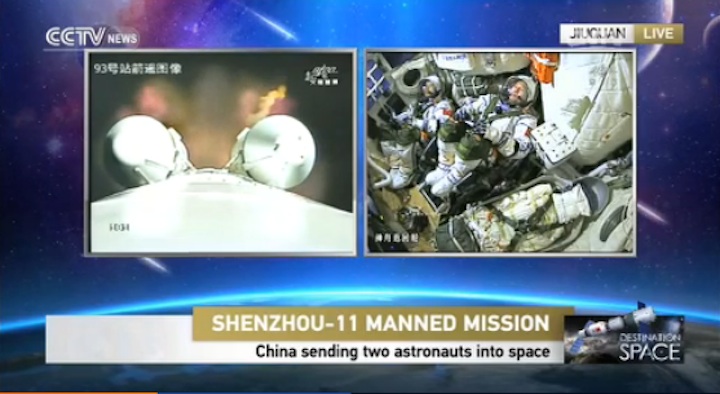
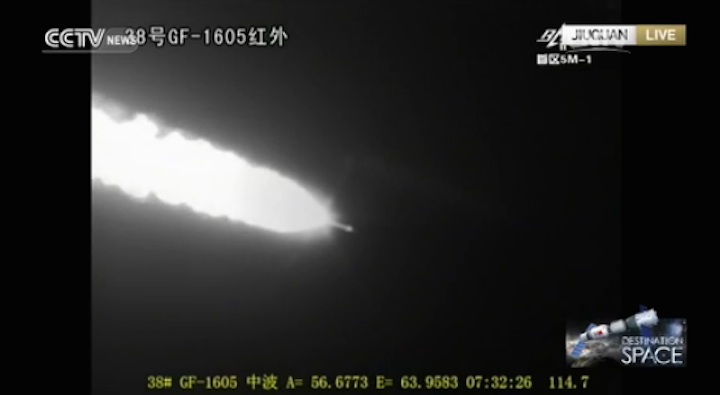

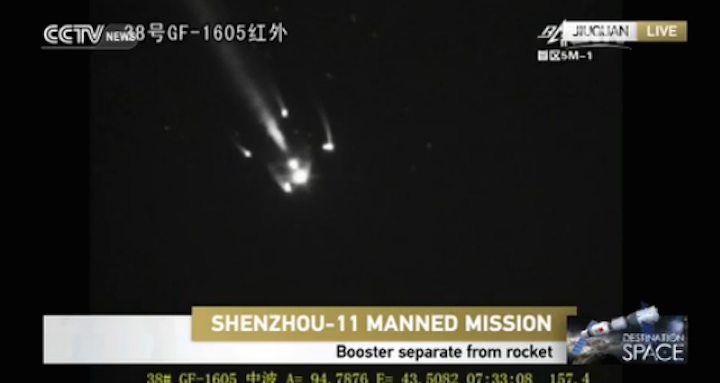
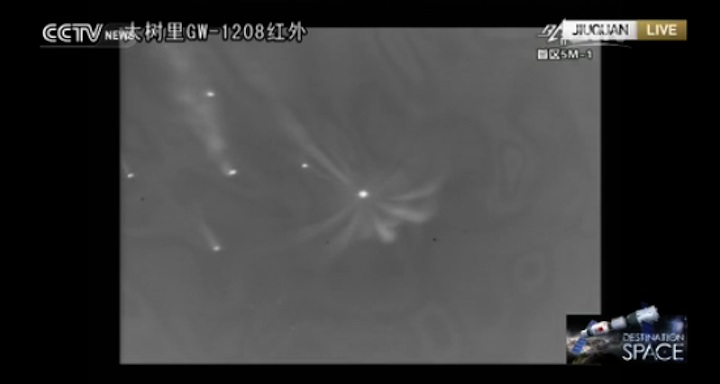
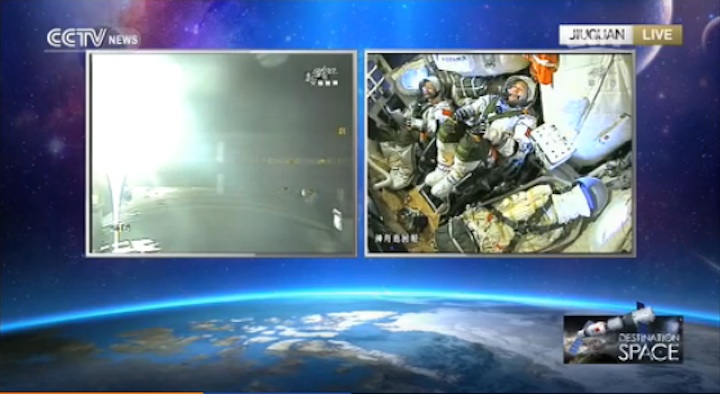
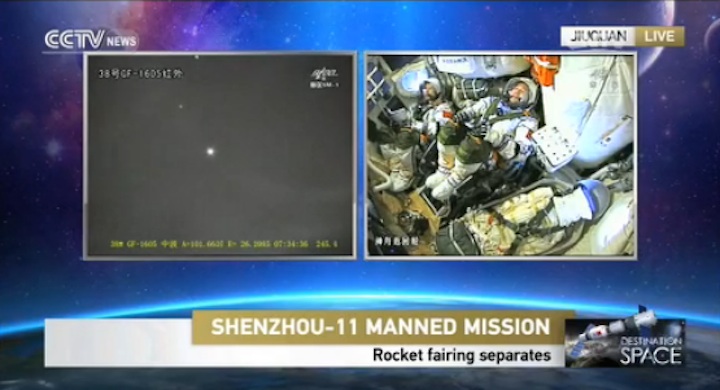

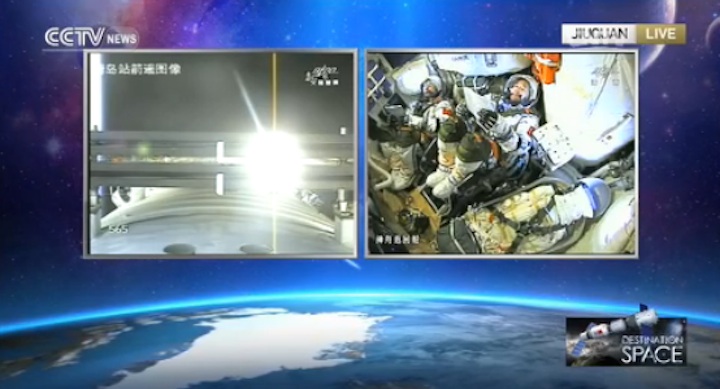
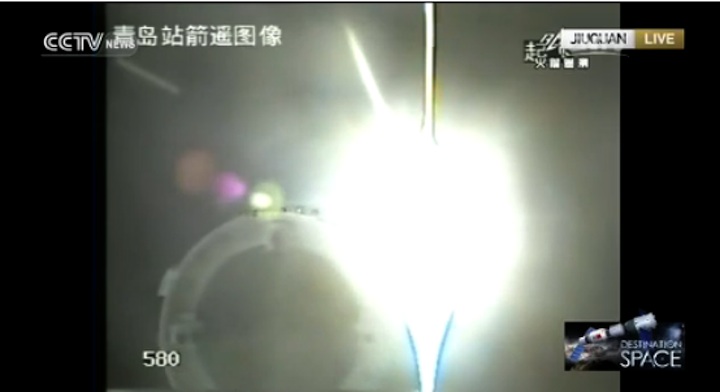

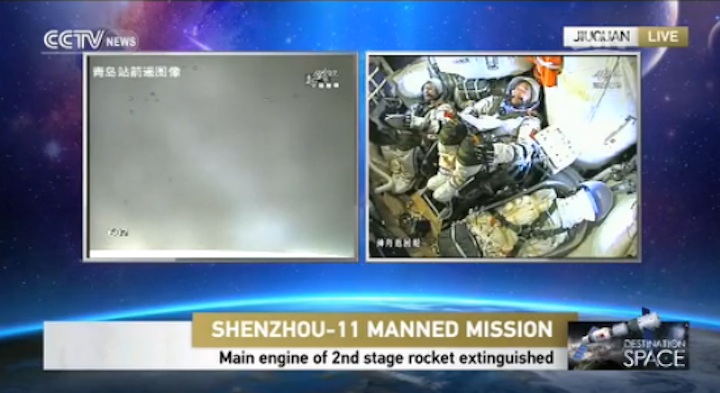
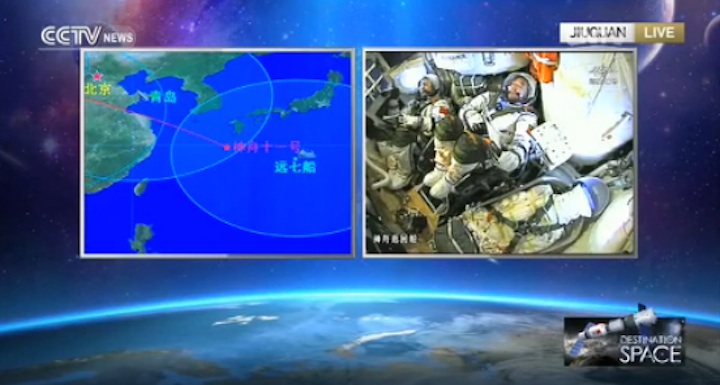
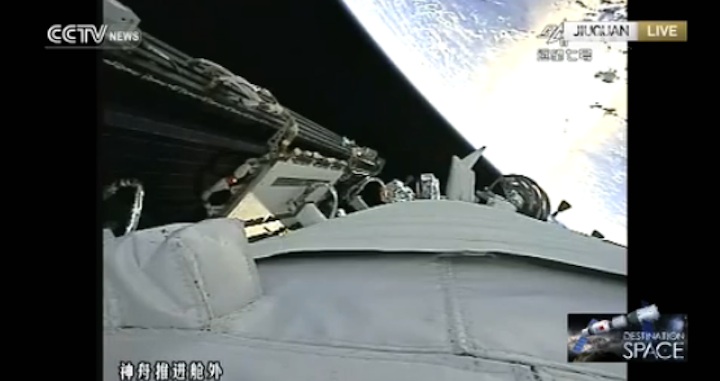
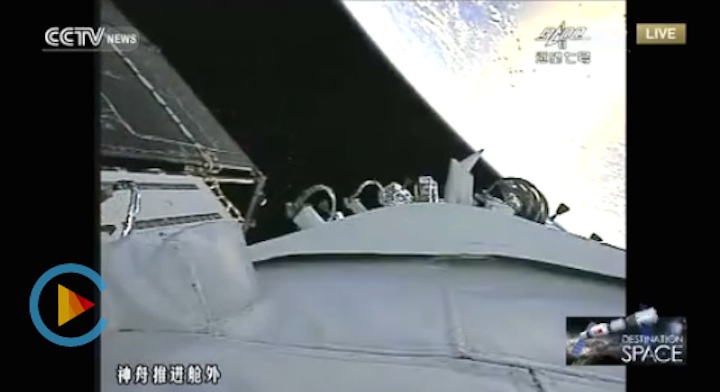
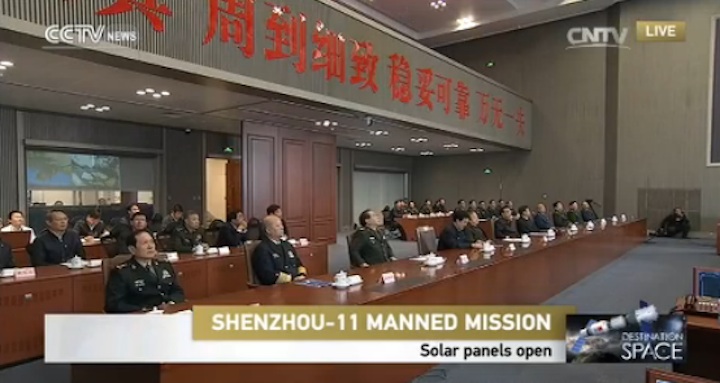
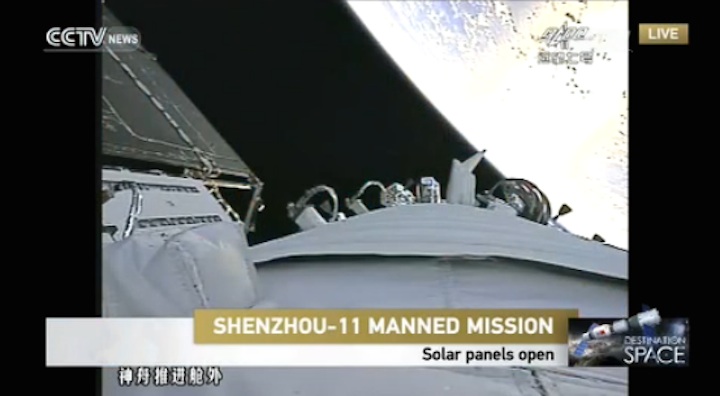
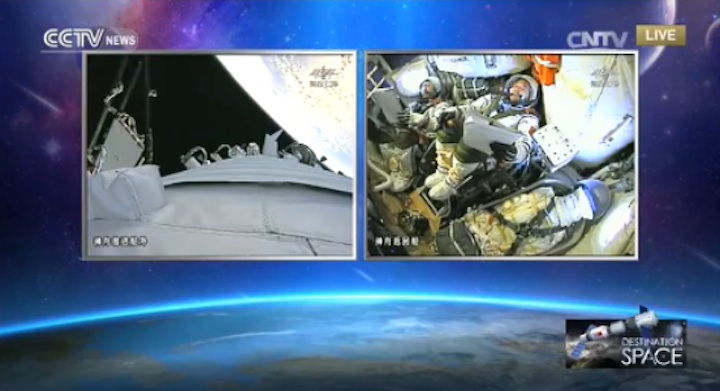
Quelle: CCTV

